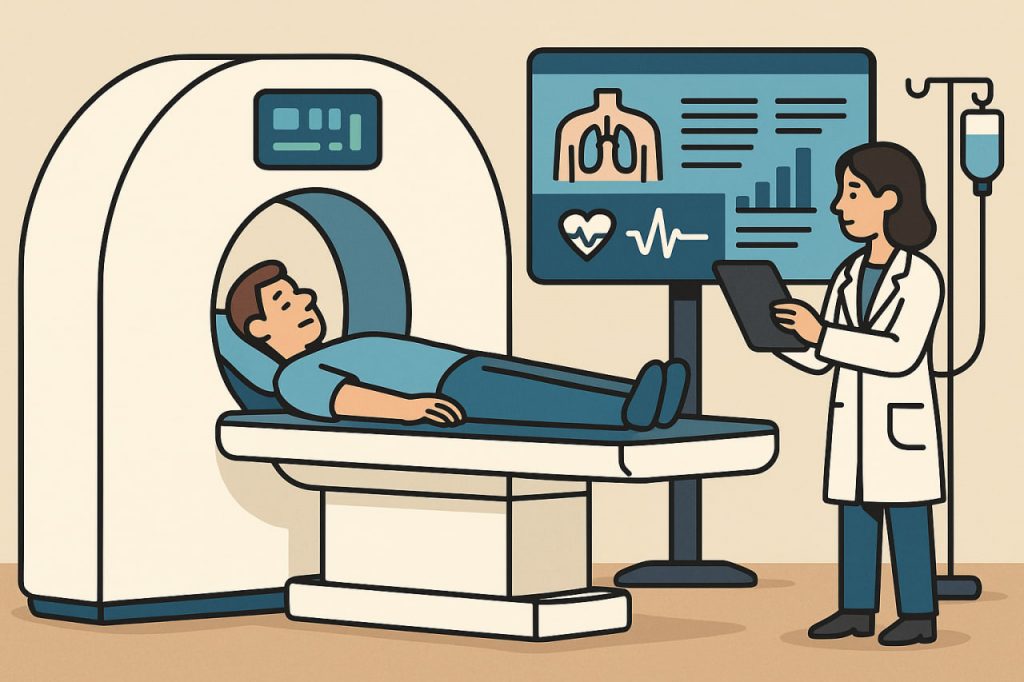Modern medical diagnostic devices are advanced technologies designed to scan, analyze, and evaluate the human body with high precision. Unlike traditional tools that target a single organ or system, new devices aim to provide a comprehensive overview of health. By combining imaging, laboratory testing, and artificial intelligence, these machines can detect diseases at very early stages. They form the backbone of preventive medicine, where identifying risks before symptoms appear greatly increases treatment success.
Imaging Technologies
One of the most important diagnostic methods involves medical imaging. Devices such as MRI (magnetic resonance imaging) and CT (computed tomography) scanners allow doctors to visualize organs, bones, and tissues in detail. PET scans add metabolic data, helping to detect cancer or neurological disorders. Portable ultrasound devices now make imaging more accessible, even outside hospitals. These machines provide critical information for both initial diagnosis and ongoing monitoring.
Laboratory Automation and Blood Analysis
New diagnostic systems can perform full blood analyses using only a drop of blood. Automated devices test for hundreds of biomarkers simultaneously, identifying infections, hormonal imbalances, and metabolic disorders. Point-of-care machines deliver results within minutes, making diagnostics faster and more patient-friendly. Combined with genetic sequencing tools, they allow highly personalized insights into individual health risks and predispositions.
Integration of Artificial Intelligence
Artificial intelligence (AI) has revolutionized diagnostics by analyzing vast amounts of medical data. AI-assisted imaging systems can detect tumors, fractures, or infections more accurately than the human eye. Smart diagnostic platforms integrate patient history, genetic data, and real-time measurements to provide tailored health assessments. AI also helps predict disease progression and recommend further examinations or treatments, serving as a decision-support tool for physicians.
Hybrid Devices: Diagnosis and Early Treatment
Some of the most innovative devices combine diagnostics with therapy. For example, robotic surgical systems guided by imaging can remove tumors with minimal invasiveness. Smart endoscopes not only detect abnormalities but also perform small interventions, such as removing polyps. Radiation therapy machines now integrate real-time imaging to precisely target cancer cells while sparing healthy tissue. These hybrid systems mark the beginning of a future where diagnosis and treatment are increasingly interconnected.
Challenges and Accessibility
Despite rapid progress, challenges remain. High costs limit access to advanced diagnostic machines in many regions. Data privacy and security are major concerns when personal health data is processed by AI systems. Moreover, while devices can detect and sometimes treat conditions, professional medical oversight remains essential. Without trained specialists, technology alone cannot ensure safe and effective care.
Conclusion
Modern diagnostic devices are transforming medicine by offering precise, comprehensive, and sometimes even therapeutic capabilities. From advanced imaging to AI-driven analysis and hybrid treatment systems, these technologies represent a new era of healthcare. While they cannot replace doctors, they provide powerful tools that improve prevention, early detection, and treatment outcomes. The future of medicine lies in the synergy of human expertise and technological innovation.
Glossary
- MRI (Magnetic Resonance Imaging) – imaging technology that uses magnetic fields to visualize body structures.
- CT (Computed Tomography) – imaging method using X-rays to create detailed body cross-sections.
- PET (Positron Emission Tomography) – imaging technique showing metabolic and functional activity.
- Biomarker – measurable indicator of biological processes or disease.
- Artificial intelligence (AI) – computer systems analyzing medical data and supporting diagnosis.
- Hybrid medical device – equipment that can both diagnose and perform treatment.


